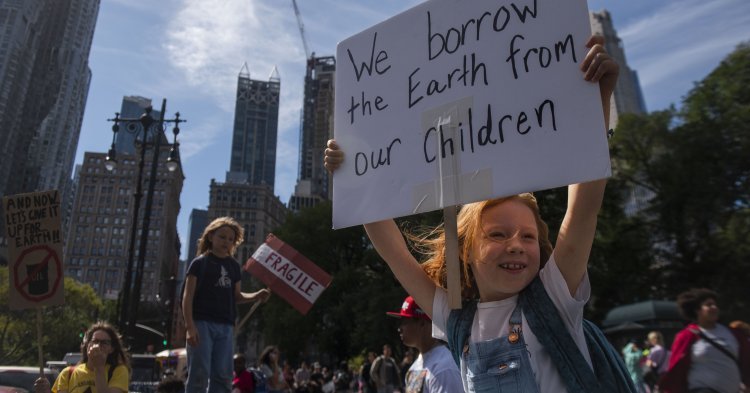The UN Climate Change Conference, often referred to as the Conference of the Parties (COP), is a conference involving all countries which have signed the United National Framework Convention on Climate Change (UNFCCC). The first conference was held in Berlin in 1995. At the time, an agreement was reached on the so-called ‘Berlin Mandate’, which included the establishment of a committee, which was responsible for drawing up protocols between the annual UN conferences. These protocols were to include fixed reduction targets for greenhouse gas emissions, as well as targets for the time-frame in which these targets should be achieved.
1997: The Kyoto Protocol: the first binding agreement
At the third UN Climate Change Conference in 1997 in Kyoto, Japan, the so-called ‘Kyoto Protocol’ was adopted. This additional protocol was the first binding agreement on the reduction of greenhouse gases, which primarily aimed to hold industrialised countries responsible for increasing emissions and the associated effect on the environment. It entered into force on 16th February 2005, as soon as the 55 countries, who were collectively responsible for over 55% of CO2 emissions in 1990, ratified it.
It enabled several other agreements, such as “burden-sharing”, which allowed signatory states to join forces in order to achieve the reduction target – even though some of them had not yet achieved it on their own. The precedent for this kind of agreement had come from the European Union, which had committed itself to reducing emissions by 8% by 2012. The target was then split between Luxembourg, Germany and Denmark, who had all achieved a reduction of 21%, while other EU countries had achieved an increase.
The protocols drawn up within the UNFCCC have already been fruitful. In the period between 2008 and 2012, the agreed reduction target of greenhouse gas emission was an average of 5.2%.
2015: The Paris Agreement
At the 2015 UN Climate Change Conference in Paris, the best-known agreement on climate protection was adopted. The Paris Agreement came into effect in November 2016, exactly 30 days after 55 countries, which were still jointly responsible for more than 55% of all greenhouse gas emissions, ratified it. This agreement will replace the Kyoto Protocol when it expires in 2020.
The Paris Agreement lays out three major goals:
1) The increase in the average global temperature is to be limited to 1.5°C compared to the pre-industrial average, in order to prevent irreversible chain reactions, which could cause an unstoppable further increase in temperature.
2) Even today, extreme weather can be attributed to climate change. Even if the increase in the average global temperature is limited to 1.5°C, many regions will have to adapt to the consequences of climate change. Their resilience, therefore, must be strengthened. Measures that contribute to this should be as free from greenhouse gas emissions as possible and must not threaten food production.
3) Furthermore, the industrialised countries should take measures to support countries with lower average incomes (which are, or will often be, hit particularly hard by the consequences of climate change) in climate-friendly policies and in strengthening their resilience.
In order to achieve these goals, the signatory states have already presented national climate protection plans at COP21 in Paris. They have also agreed to set stricter targets every five years if scientific evidence so recommends. The EU’s current target is to reduce greenhouse gas emission by 40% by 2030.
2019: The importance of the Climate Change Conference in Madrid
This year, the 25th annual UN Climate Change Conference is taking place. It is no longer just a single conference. Instead, it comprises of several individual conferences taking place in parallel. In addition, groups of states with similar national goals, interests and positions will join forces to make the exchange more efficient. In addition to the nearly 200 countries represented, scientists, journalists, NGOs and visitors will attend.
Following the global protests against climate change, which have received a great deal of media attention, the forthcoming UN Climate Change Conference in Madrid will be of great importance.
The current “Emissions Gap Report” of the UN Environment Programme (UNEP) shows that if action is not taken immediately, the average global temperature could rise by 3.9°C by 2100. Even if the measures agreed in the Paris Agreement are implemented, it could rise by up to 3.2°C, the report says. This would result in irreversible damage that would only speed up the rise of the global temperature. This would make climate change unstoppable. In the end, the Earth would no longer be habitable for humans and many other species. There is, therefore, great hope that COP25 will be taken as an opportunity to adopt effective measures. If such measures are adopted, it may still be possible to limit the temperature increase to 1.5°C.
The UNEP report sets out clear proposals for action that may help to achieve this objective. One of these proposals is that, between 2020 and 2030, greenhouse gas emissions must be reduced by 7.6% each year. It also states that the industrialised countries must, in principle, work faster on this than countries in the global South. The former are responsible for 80% of all emissions.
The motto of COP25 is #TimeforAction. Scientists and climate protectors hope that the national climate protection plans will be adapted in order to achieve the 1.5°C target - particularly since the Kyoto Protocol will be officially replaced by the Paris Agreement in 2020.
All eyes are on Madrid.


Follow the comments: |
|
